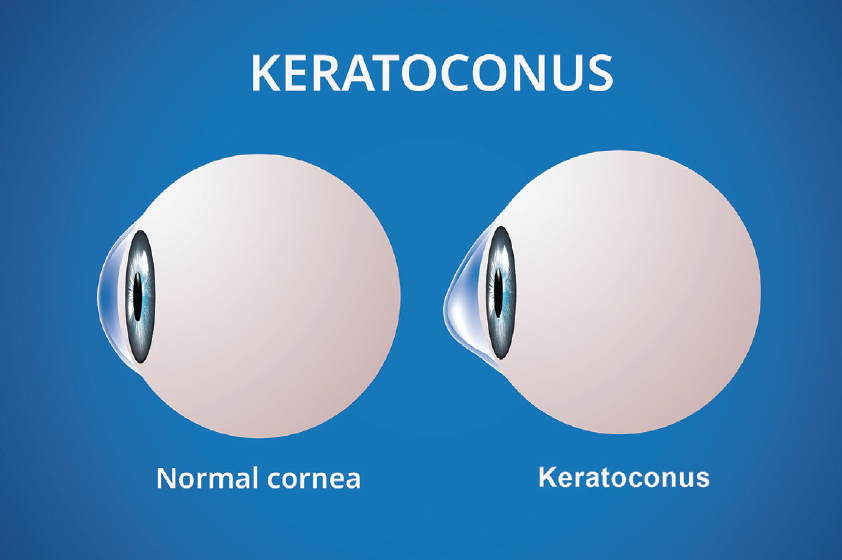Key: Early detection and treatment
Keratoconus is a condition that affects the structure of the cornea. When keratoconus is present in an eye, the clear dome shape membrane that covers the eye thins down, thus bulging outwards forming a cone shape.
Keratoconus generally manifests itself at puberty and can progress until a patient is in their 30’s. Patients with a family history of keratoconus are at a higher risk of developing this condition. Constant inflammation of the corneas due to allergies or irritants and chronic eye rubbing can also lead to the progression of this condition at any age. Untreated, keratoconus can lead to the need for a corneal transplant.

Early stages of keratoconus can be treated by wearing prescription glasses and special hard contact lenses. Progressive keratoconus can be treated by corneal cross-linking, decreasing the chance of needing more advanced treatment.
Cross-Linking Treatment
Cross-linking is an in-office based procedure which involves the application of a special Riboflavin (Vitamin B) solution to the eye and then activating it with ultraviolet light for about 30 minutes. This process causes new collagen bonds to form therefore strengthening the corneal membrane. The goal of cross-linking is to strengthen the weak area in the cornea to halt the progression of keratoconus.
iLink Corneal Cross-Linking
Rand Eye Institute is proud to offer the only FDA approved epi-off corneal cross-linking procedure. Cross-linking prevents further deterioration in vision and the need for a corneal transplant. After the procedure, patients may still need to wear glasses or special contact lenses for clearer vision. These contacts or glasses will have a different prescription than before the cross-linking treatment. We will refer the patient to an Optometrist for a contact lens fitting after the procedure.
